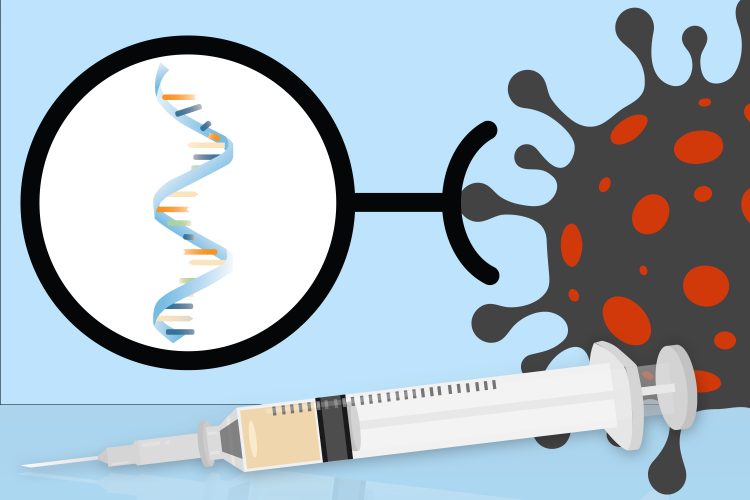As millions the world over receive mRNA-based vaccinations for COVID-19, there is hope that the virus and its attendant wanton destruction may soon be in our collective rear view mirrors. Other vaccine approaches, for example employing viral vectors, are making their way into the armamentarium of anti COVID-19 treatment options – the news just keeps getting better. The focus here is on mRNA technology – how did we get to this point, and what does it mean for the future?

The central dogma of molecular biology – loosely defined – states that DNA instructs mRNA creation, which directs protein synthesis. Ultimately, of course, it is the protein or enzyme created that is the molecule missing or defective in disease or needed to create immunity. DNA/gene-based therapies have existed for some time and recent advances have begun to overcome early technical problems encountered. The use of protein biologics – molecules produced in living cell “factories,” have also emerged as a viable option to treat protein/enzyme deficiencies or to introduce specifically designed functional antibodies. However, as a protein biochemist who has developed protocols for purifying enzymatically active protein biologics, I can assure you the process is exquisitely complex, time consuming, and costly. The approach can and has worked – it is simply a matter of committing the time and resources to empirically determining/optimizing the purification protocols.
Another option has emerged – specifically, the development of mRNA technologies as a mechanism to induce protein/enzyme expression. Again, as pointed out above – it is not that the role of mRNA in protein synthesis was unclear, rather, there were technical problems attendant to the approach. Let’s consider some of these previous limitations and how they were overcome to allow mRNA to be an efficient messenger of protein synthesis in humans.
mRNA is exquisitely unstable. RNAases – enzymes which break down mRNAs, are very efficient and ever present. mRNA will not enter cells, and if they could be transported, their mere presence often elicits an immune response. Couple this with relatively low protein yields from the cell’s translation processes – and the need for repeated dosing is manifest. So, what has changed?
First, Karikó and coauthors showed that employing specifically modified nucleosides in the design and synthesis of an mRNA molecule would render it far less immunogenic.1 A great first step! Next, the sequence of the mRNA coding region (the area that encodes the information for the protein itself) would take advantage of what was known about (protein) translation. That is, some codons (~mRNA sequences that encode specific amino acids) are expressed more efficiently than others – resulting in greater overall protein yields. Recall that most amino acids are encoded by more than one codon, that is, the genetic code is degenerate. Detailed structural analyses of mRNAs also yielded new information about the importance of 5’ and 3’ untranslated regions in terms of the molecule’s overall stability and translational efficiency. A more complete understanding of mRNAs’ 5’ cap and 3’ poly (A) tail served to further extend the ability to preserve the molecule’s integrity.
Next, it was necessary to design a delivery system – a mechanism that would both protect the mRNA molecule, as well as assure its entry into cells. Many approaches were tested – lipid nanoparticles emerged as an efficient option. Once encapsulated and introduced into tissues, the mRNAs are internalized into cells by endocytosis – basically an engulfment of the lipid vesicle by the cell’s plasma membrane. Once inside the cell – the nascent endosome degranulates and the mRNA molecule is able to emerge into the cytoplasm and begin directing protein synthesis. The cell itself thus makes the protein.
Where does the technology go from here? The answer – quite simply, is that mRNA therapy could potentially be a suitable approach to treat many human diseases. Single enzyme deficiencies constitute a large class of lysosomal storage diseases (e.g., Tay-Sachs or Inclusion-cell (I-cell)), inherited metabolic diseases (e.g., Gaucher or Hunter syndrome), and peroxisomal diseases (e.g., acyl-CoA oxidase or D-bifunctional protein deficiency). Arginase deficiency and cystic fibrosis (caused by the dysfunctional cystic fibrosis transmembrane conductance regulator molecule) are two additional proteins whose missing or defective activities are associated with disease and whose replacement is being sought through mRNA therapies. Designing and synthesizing appropriate mRNAs is relatively straightforward, as is lipid nanoparticle encapsulation. Cold chain handling of the resultant therapeutic remains a requirement – but what a small price to pay for what could be life-changing medicines. It would not be inappropriate to say “the sky is the limit” with respect to the potential of mRNA-based protein/enzyme replacement therapeutics.
SRT – February 2021
Reference:
[1] K. Karikó, M. Buckstein, H. Ni, and D. Weissman, Immunity (2005) doi: 10.1016/j.immuni.2005.06.008. PMID: 16111635
